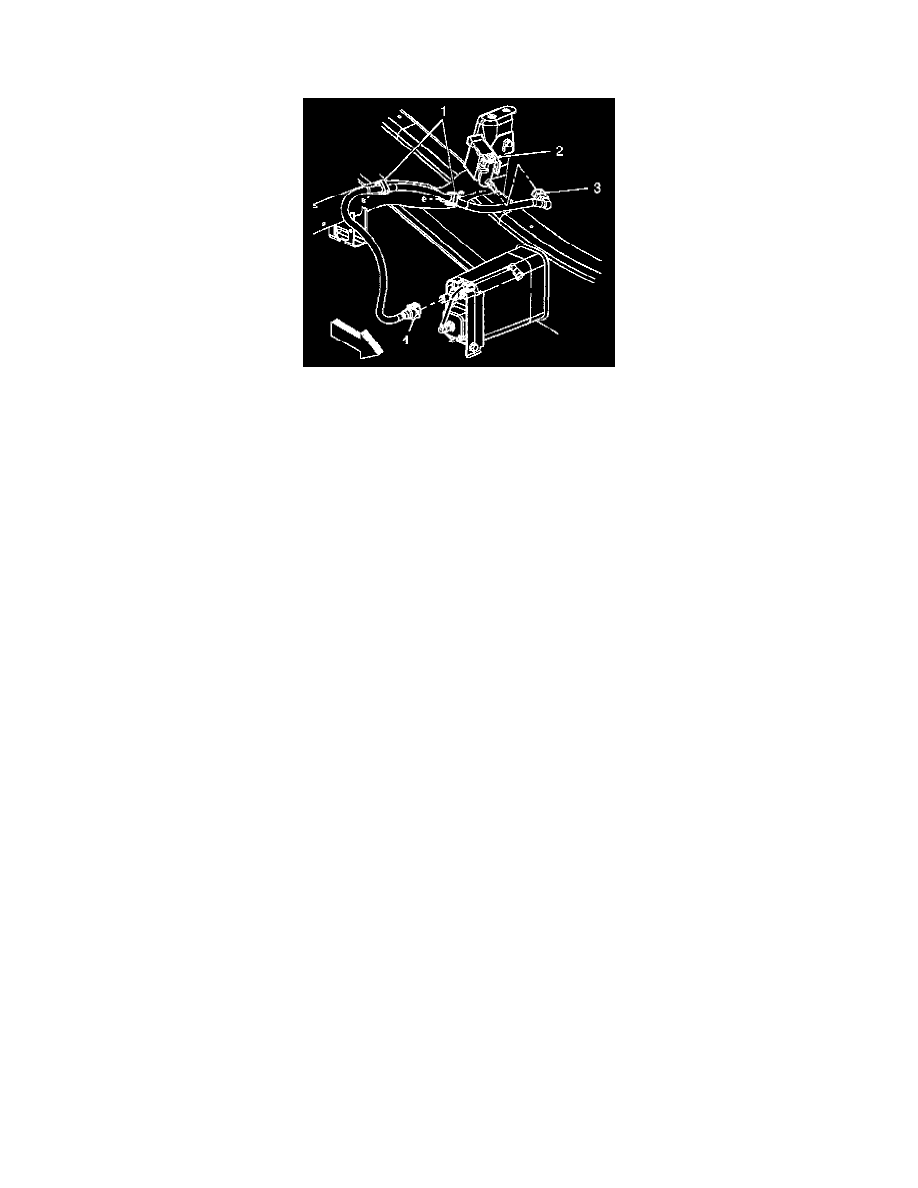K 1500 Truck 4WD V8-4.8L VIN V (1999)

Canister Purge Solenoid: Description and Operation
EVAP Vent Solenoid
The evaporative leak detection diagnostic strategy is based on applying vacuum to the EVAP system and monitoring vacuum decay.
The PCM monitors vacuum level via the fuel tank pressure sensor input. At an appropriate time, the EVAP purge solenoid and the EVAP vent solenoid
(2) are turned on, allowing engine vacuum to draw a small vacuum on the entire evaporative emission system. After the desired vacuum level has been
achieved, the EVAP purge solenoid is turned off, sealing the system. A leak is detected by monitoring for a decrease in vacuum level over a given time
period, all other variables remaining constant. A small leak in the system causes DTC P0442 to be set.
If the desired vacuum level cannot be achieved in the test described above, a large leak or a faulty EVAP purge solenoid is indicated. This can be caused
by the following conditions:
^
A disconnected or faulty fuel tank pressure sensor.
^
A missing or faulty fuel cap.
^
A disconnected, damaged, pinched, or blocked EVAP purge line.
^
A disconnected or damaged EVAP vent hose.
^
A disconnected, damaged, pinched, or blocked fuel tank vapor line.
^
A disconnected or faulty EVAP canister solenoid.
^
A disconnected or faulty EVAP vent solenoid.
^
An open ignition feed circuit to the EVAP vent or purge solenoid.
^
A damaged EVAP canister.
Any of the above conditions sets DTC P0440.
A restricted or blocked EVAP canister vent path is detected by drawing vacuum into the EVAP system. The PCM turns off the EVAP vent solenoid and
the EVAP purge solenoid (EVAP vent solenoid Open, EVAP purge PWM 0%). The PCM monitors the fuel tank pressure sensor input. With the EVAP
vent solenoid open, any vacuum in the system should decrease quickly unless the vent is blocked. A blockage is caused by the following conditions:
^
A faulty EVAP vent solenoid (stuck closed).
^
A plugged, kinked, or pinched vent hose.
^
A shorted EVAP vent solenoid driver circuit.
^
A plugged evaporative canister.
If any of the above conditions are present, DTC P0446 sets.
The PCM checks for conditions that cause the EVAP system to purge continuously by commanding the EVAP vent solenoid on and the EVAP purge
solenoid off (EVAP vent solenoid CLOSED, EVAP purge PWM 0 %). If fuel tank pressure level increases during the test, a continuous purge flow
condition is indicated. This can be caused by the following conditions:
^
The EVAP purge solenoid is leaking.
^
The EVAP purge solenoid driver circuit is grounded.
If any of the above conditions are present, DTC P1441 sets.
Refer to the appropriate DTCs for further diagnostic procedures regarding the EVAP system.
